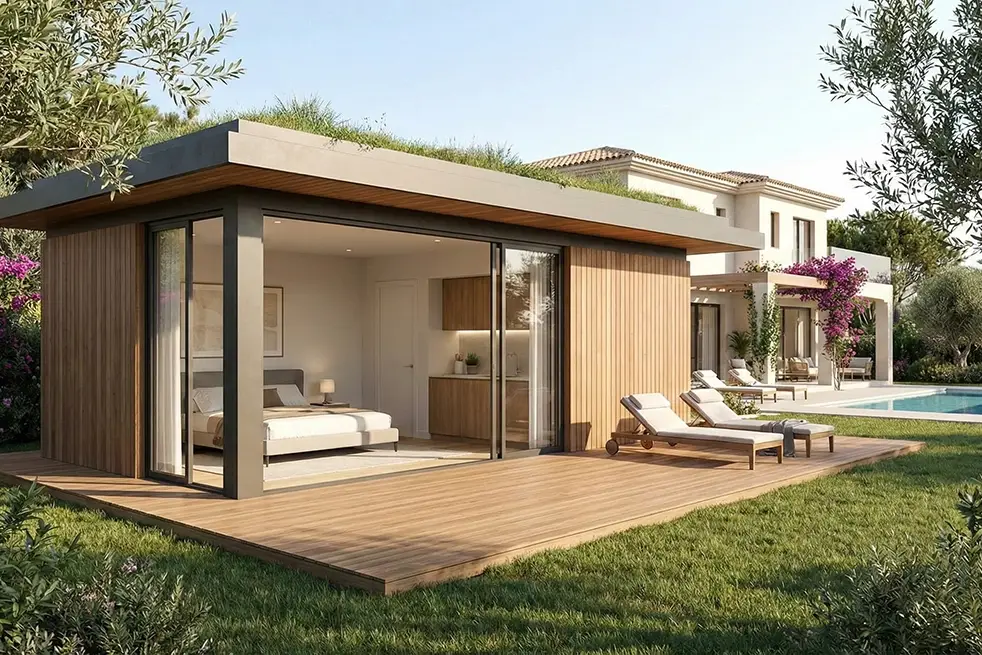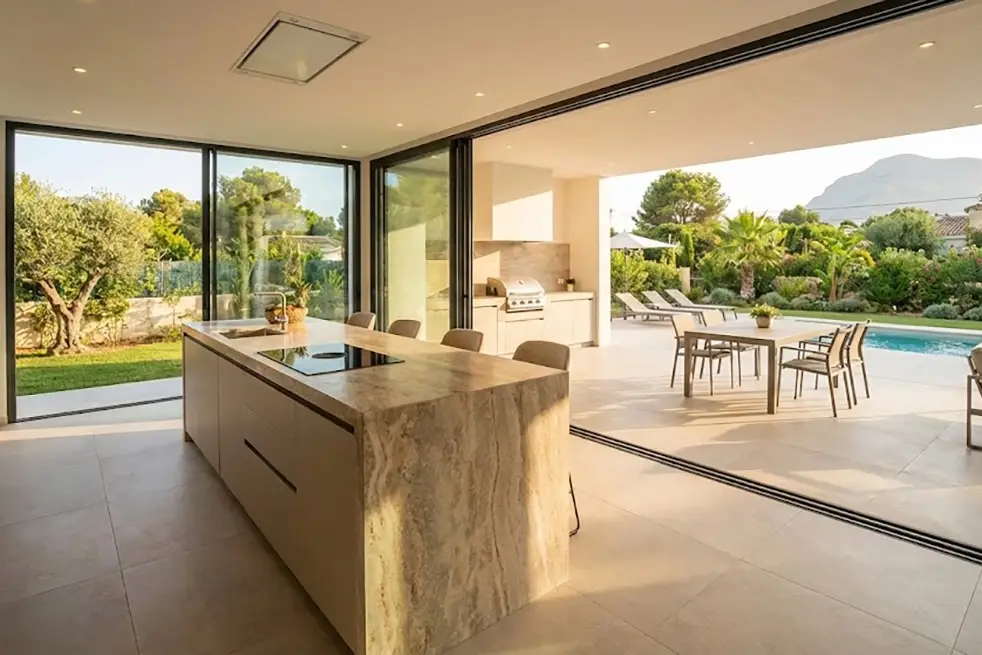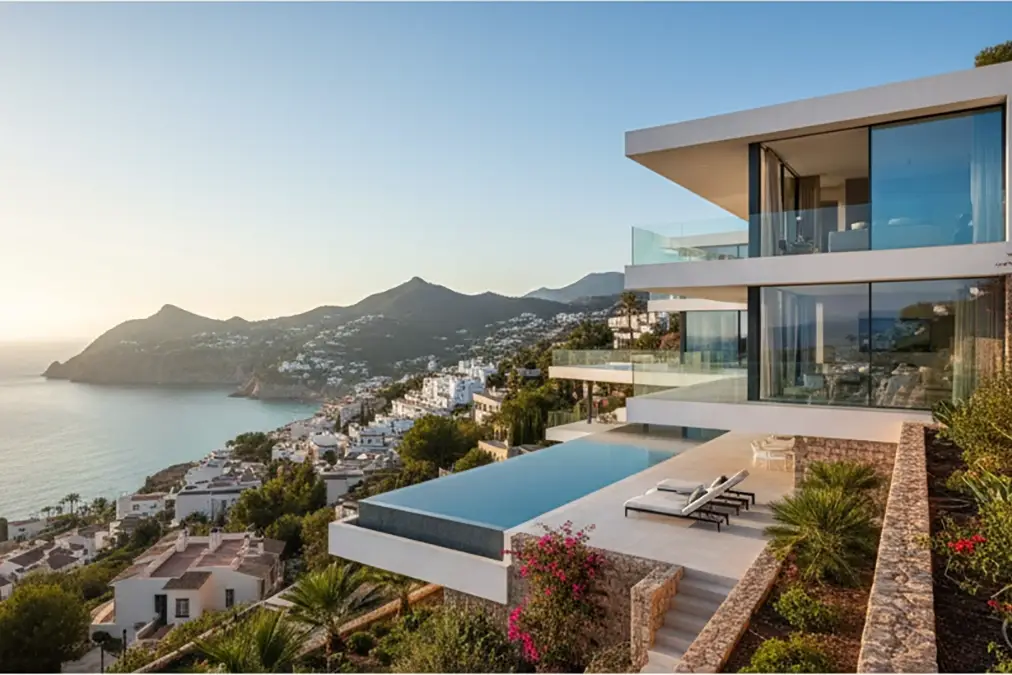Passive houses are revolutionising modern architecture, especially in warm climates like the Mediterranean Coast. Why are they so popular? Because they offer comfort, sustainability, and energy efficiency—qualities that today are not just desirable but essential. In this article, we will explore what passive houses are, their advantages, costs, and how they adapt to the warm Mediterranean climate.
What are passive houses?
Passive houses are buildings designed to maximise energy efficiency, minimising heating and cooling needs. This type of housing is based on five basic principles: thermal insulation, high-efficiency windows, airtightness, mechanical ventilation with heat recovery, and thermal bridge-free design.
Advantages of passive houses on the mediterranean coast
Significant energy savings:
On the Mediterranean Coast, where summer temperatures can be extreme, passive houses offer optimal thermal comfort with minimal energy consumption. This type of housing can reduce energy use by up to 90% compared to traditional buildings.
Year-round indoor comfort:
Thanks to excellent insulation and controlled ventilation systems, passive houses provide a pleasant indoor environment—cool in summer and warm in winter.
Long-term cost reduction:
Although the initial investment is higher than conventional construction, energy bill savings mean the investment pays for itself within a few years. Additionally, passive houses typically have higher resale value.
Sustainable construction:
Using eco-friendly materials and energy-efficient designs significantly reduces carbon footprints, especially relevant in tourist areas like the Mediterranean Coast.
Costs of building passive houses on the mediterranean coast
Initial investment:
The initial cost of building a passive house can be between 10% and 20% higher than traditional construction, mainly due to high-quality materials and advanced ventilation and insulation systems.
Maintenance costs:
Despite the higher initial expense, maintenance for passive houses is generally lower. Mechanical ventilation systems and efficient energy use significantly reduce operational costs.
Long-term profitability:
Passive houses represent profitable long-term investments due to continuous energy savings and increased property value.
Adapting to the warm mediterranean climate
Building passive houses in warm climates like the Mediterranean requires specific adjustments to maximise energy efficiency:
Smart orientation:
Architectural design focuses on maximising sunlight in winter while minimising direct exposure in summer.
High-quality thermal insulation:
Proper insulation in walls, roofs, and floors is essential to prevent overheating and maintain stable temperatures.
Controlled ventilation:
Ventilation systems with heat recovery allow fresh air circulation without compromising indoor comfort.
Active and passive solar protection:
Awnings, pergolas, and appropriate vegetation help maintain a comfortable indoor climate.
Why passive houses are trending on the mediterranean coast
Environmental awareness:
More people are seeking sustainable living, reducing their ecological footprint.
Long-term economic savings:
Energy savings make passive houses economically attractive for those seeking efficiency and comfort.
Modern and functional designs:
Passive houses are not only efficient but also stand out for their modern aesthetics and superior comfort.
Frequently asked questions about passive houses on the mediterranean coast
Are passive houses more expensive than conventional houses?
Yes, but long-term energy savings make them a profitable investment.
Can passive houses be built in warm climates?
Absolutely. Specific techniques such as mechanical ventilation and strategic material use are applied.
How much energy can a passive house save?
Up to 90% compared to traditional constructions.
Can a conventional house be converted into a passive house?
Yes, although significant modifications in insulation, ventilation, and energy efficiency are required.
What materials are used to build passive houses?
Eco-friendly materials like wood, mineral wool insulation, and heat recovery systems.
How long does it take to recoup the investment in a passive house?
Depending on size and features, the payback period typically ranges from 5 to 15 years.
Our opinion
Passive houses on the Mediterranean Coast are more than a trend—they represent a commitment to sustainability, economic savings, and comfort. Combining advanced construction techniques with climate-specific designs makes these homes the perfect choice for those seeking efficiency and well-being.
At La Quinta Fachada Arquitectura, we specialise in building passive houses specifically designed for the Mediterranean climate. Our team of experts uses ecological materials, advanced insulation techniques, and efficient ventilation systems to guarantee maximum comfort with minimal energy consumption. If you want to build your dream home with the highest standards of sustainability and design, contact us, and let’s discuss your project!




